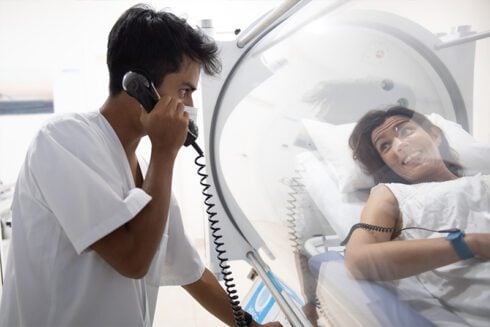WHO could forget how strange our lives became on 14 March 2020, thanks to the new virus with the spike protein? We were told it hailed from the Wuhan wet market in China, and constant news coverage whipped up public fears.
With little warning, we were instructed to stay at home (quédate a casa) and were only allowed outside for ‘essential supplies’, animal care, or to empty our bins, all to be undertaken in a mask.
The national state of alarm ended on June 9, 2021. After that, regional governments could decide rules – such as, residents must remain within their own province or municipality and not gather in groups.
Despite the strict lockdown, Spain had 255 deaths per 100,000 inhabitants, an unenviable rate in Europe.
Afterwards, we eventually ‘de-escalated’ out of Covid restrictions, returning to a full life with family, friends, and fiestas in 2022.
Three years on, what (if anything) have we learned from our collective experience? And, with many people currently sick with coughs and fevers, has Covid really gone – and if so, where?
What happened to the Kraken variant?
In January, when China abandoned its ‘zero Covid’ policy, and opened its borders, the world feared that new subvariants would fly out.
A much hyped subvariant is Kraken (ZBB.1.5). Derived from Omicron and related to the XBB strain, Kraken appeared last October. The World Health Organisation (WHO) has been watching it as a ‘variant of concern’. According to a December study in Cell magazine, it’s great at evading immune defences and vaccines. So where is it?
Although Kraken is already supposed to be in 29 countries, and already accounts for 40% of cases in Spain (of those that are tested and reported), who knows anyone who has been diagnosed with this subvariant? Answers on a postcard.
Do tests still work?
Despite everyone seeming to be sick with fevers, persistent coughs, and weakness, reports of positive Covid tests are anecdotally scarce.
Are the home antigen tests doing their job? This is debatable. The advice from the Federal Drug Agency (FDA) is ‘if you think you are infected with Covid but test negative, test again in 48hrs . . . if you’re still negative, take another in two days’.

A 2022 study showed that home antigen tests were only 60% accurate on the first day of a person’s symptomatic infection. For asymptomatic infections it dropped to 12%. A second test improved accuracy to 92% and 51% respectively. The need for ‘serial testing’ is hardly inspiring.
Lucy Hayes Logan of Lanjaron says: “I recently caught Covid from someone with a ‘bad cold’. When they notified me, I tested every day and got a positive after two days. I had previously caught Covid in January 2022. The symptoms were different this time, with fever, dizzy, chills and body pain, so it could have been a different variant.”
She adds: “Maybe there aren’t many positives because people test once when they start to develop symptoms, rather than retesting during the estimated incubation period. It’s an expensive process and unpleasant. So, with a negative test they put it down to a bad cold or flu and just treat the symptoms.”
What about the super flu?
With hardly anybody claiming to have Covid, many people complain of a cough with fatigue lasting three weeks, or a feverish flu that sends you to bed for a week instead. Colds never used to last that long.
Arguably, the lack of mingling, and the prevalence of masks during the pandemic have lowered our resistance to germs, our immune response.
Ivan Sanz Muñoz, of Spain’s National Influenza Center of Valladolid, said in an interview with Teknautas: ‘Covid-19 displaced all respiratory viruses, in general. For this reason, now everyone is sick, since the viruses are recovering their ecological niche.
‘In addition, the flu virus mutates 10 times faster than the coronavirus that causes Covid-19.’
Recent articles from America suggest that during the pandemic people lied about their children having Covid. That’s no surprise.
People working in the gig economy, or freelancers with no sick pay, cannot afford to be ill. A possible Covid infection is easy to pass off as a bad cold; a lack of testing means that most people don’t even know what they’ve caught. And then they spread it.
Where did Covid really come from?
This March, the US Congress passed a bill to declassify documents about the origins of Covid. They suggest that it comes from the Wuhan Institute of Virology. The American contingent is now asking what research the Wuhan laboratory carried out before the outbreak of Covid, and why some researchers were sick in 2019.

As one Olive Press reader said when the pandemic started: “If there was a puddle beside the puppy, you might reasonably think the puppy did it”. Despite that, WHO did its best to reassure the world that Covid mutated from pangolins sold in the nearby Wuhan wet market.
Where are we going now?
According to Statista, Spain had 3.7 million Covid cases up to March 1, 2023; and 119,400 deaths. Despite that, some people still claim that Covid never existed, and was just ‘flu’.
Although we have emerged back into a kind of normality, the impact on Spain’s mental health (and people’s finances) is still felt today. And there’s a whole Covid generation: children born after March 2020 know nothing other than the Covid era.
During the pandemic, we all saw division and even hate within our communities – mask wars, conspiracy theories, and reporting of neighbours who ventured outside. This division in society exists today. It hasn’t gone away.
If we have learnt anything at all, it’s maybe that the truth can be bent (as well as putting up with fake news), and, where the pandemic is concerned, falls somewhere in the big space between official dialogue and conspiracies.
READ MORE
- Covid-19 hospitalisations rise 10% over last week in Spain
- Sales of flu remedies shoot up as Spain hit by major second wave of virus








